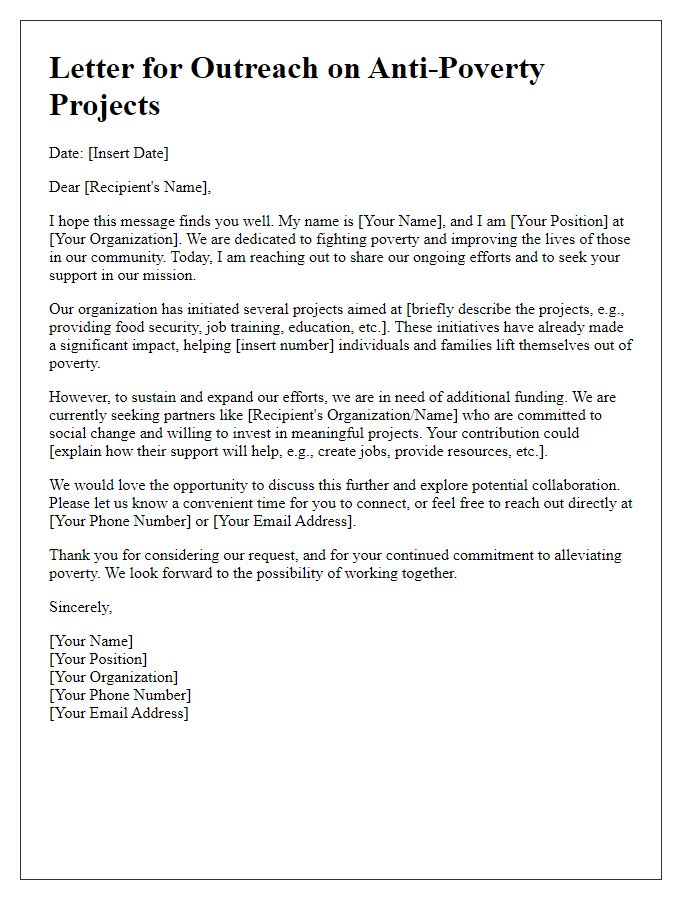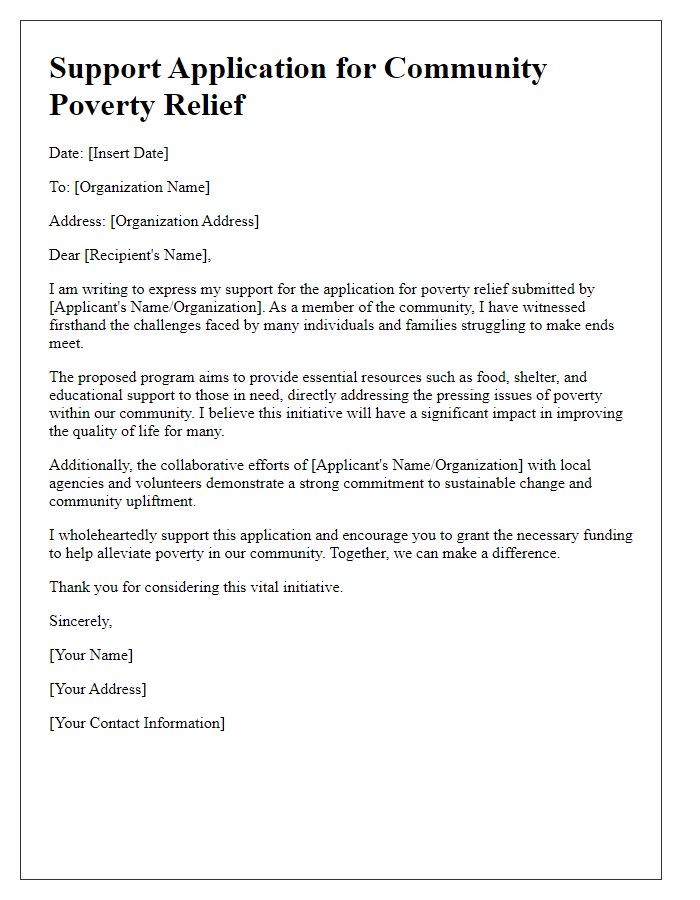Are you looking to make a meaningful impact in the fight against poverty? Writing a compelling letter for an anti-poverty grant application can be the key to securing the funding you need for your project. In this guide, we'll explore essential tips and strategies to craft a persuasive letter that captures the attention of grant reviewers and clearly outlines your mission. Dive in to discover how to effectively articulate your vision and increase your chances of success!

Applicant's personal and contact information
Personal information plays a crucial role in grant applications for anti-poverty initiatives. Essential data includes the applicant's full name, ensuring proper identification in funding databases. Contact details, such as residential address, phone number, and email, facilitate communication between the applicant and the granting agency. Including demographic information, like age and ethnicity, may help align the application with specific funding priorities. Additionally, highlighting relevant personal experiences or challenges faced in poverty contexts can strengthen the narrative, making the application more compelling to reviewers. Accurate, up-to-date information is vital, as it reflects professionalism and respect for the funding process.
Statement of need and objective
In many urban areas, the persistent issue of poverty affects approximately 11% of the population, leading to a significant need for intervention programs. In neighborhoods such as East Baltimore and South Chicago, families navigate challenges such as food insecurity, lack of access to quality education, and inadequate healthcare services. The objective is to secure funding to implement a comprehensive outreach program that addresses these disparities by providing essential resources, including nutritious meals, tutoring services for K-12 students, and health screenings, focusing on low-income households. By fostering community partnerships with local organizations and leveraging volunteers, this initiative aims to reduce poverty levels by at least 20% over the next three years, empowering families to achieve self-sufficiency and improve their overall quality of life.
Description of current financial situation
Many individuals and families face significant financial hardships, characterized by decreasing incomes and rising living costs. National statistics reveal that around 34 million Americans live below the federal poverty line, which is defined as approximately $27,750 annually for a family of four. In urban areas like Los Angeles, California, the cost of living continues to increase, with average rents surpassing $2,500 each month, leaving minimal funds for other essential expenses such as food, healthcare, and transportation. Employment opportunities are limited, reflecting a job vacancy rate of only 3% in sectors like hospitality and retail, traditionally known for entry-level positions. The increasing reliance on food banks, evidenced by a 40% increase in demand in 2022, highlights the urgent need for assistance. Community support systems struggle to meet these needs, as seen during the recent economic downturn triggered by the COVID-19 pandemic, revealing the profound and ongoing impact of systemic poverty on vulnerable populations.
Proposed use of grant funds
The proposed use of grant funds will focus on a multi-faceted approach aimed at alleviating poverty in the low-income neighborhoods of Detroit. Allocating 40% of the budget will support vocational training programs targeting unemployed adults aged 18-45, offering certifications in high-demand sectors such as information technology and healthcare. Another 30% will fund food security initiatives, partnering with local food banks and community gardens to provide nutritious meals and education on sustainable practices. Additionally, 20% will be directed towards child support services, including after-school tutoring programs designed to assist students from economically disadvantaged backgrounds, enhancing their academic performance and future opportunities. The remaining 10% will cover administrative costs to ensure effective program management and resource allocation. This comprehensive strategy aims to tackle the root causes of poverty, providing tangible resources and opportunities for 1,500 families annually within the targeted community.
Supporting documentation and evidence
Supporting documentation and evidence play a crucial role in the effectiveness of anti-poverty grant applications. Comprehensive data sets, such as the 2020 U.S. Census statistics, which reveal that approximately 34 million Americans live below the poverty line, strengthen the narrative of the application. Additionally, case studies from local initiatives in cities like Detroit or New Orleans showcase successful strategies for poverty alleviation, providing evidence of effective intervention models. Evaluative reports from organizations like the Urban Institute present insights and impact assessments, substantiating the need for funding. Testimonials from beneficiaries illustrate personal transformations that highlight the human aspect of poverty solutions. Financial statements reflecting budget allocations for program activities ensure transparency, while letters of support from community stakeholders like schools, healthcare providers, and local businesses emphasize collaborative efforts to tackle poverty on a systemic level.
Letter Template For Anti-Poverty Grant Application Samples
Letter template of funding proposal for social welfare and poverty solutions













Comments